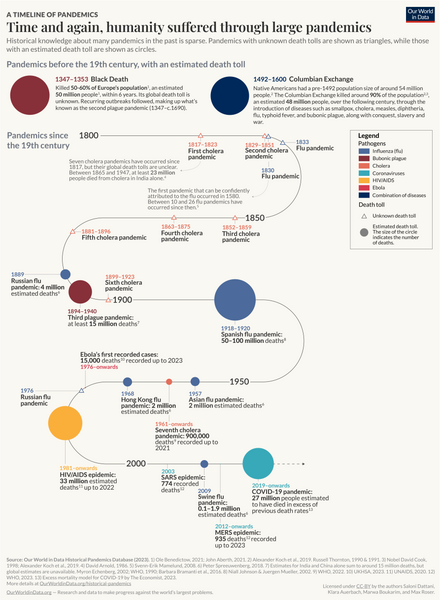
Back የወረርሽኞች ዝርዝር Amharic قائمة الأوبئة Arabic لستة الاوبئه فى العالم ARZ Llista d'epidèmies Catalan Liste over epidemier Danish Liste von Epidemien und Pandemien German Anexo:Cronología de epidemias Spanish Liste d'épidémies French महामारी का तालिका कौलंबियन विनियम Hindi Համաճարակների ցանկ Armenian

This is a list of the largest known epidemics and pandemics caused by an infectious disease. Widespread non-communicable diseases such as cardiovascular disease and cancer are not included. An epidemic is the rapid spread of disease to a large number of people in a given population within a short period of time; in meningococcal infections, an attack rate in excess of 15 cases per 100,000 people for two consecutive weeks is considered an epidemic.[1] Due to the long time spans, the first plague pandemic (6th century – 8th century) and the second plague pandemic (14th century – early 19th century) are shown by individual outbreaks, such as the Plague of Justinian (first pandemic) and the Black Death (second pandemic).
Infectious diseases with high prevalence are listed separately (sometimes in addition to their epidemics), such as malaria, which may have killed 50–60 billion people throughout history, or about half of all humans that have ever lived.[2]
- ^ Green MS; Swartz T; Mayshar E; Lev B; Leventhal A; Slater PE; Shemer Js (January 2002). "When is an epidemic an epidemic?". Isr. Med. Assoc. J. 4 (1): 3–6. PMID 11802306.
- ^ Whitfield, J. (2002). "Portrait of a serial killer". Nature. doi:10.1038/news021001-6.
© MMXXIII Rich X Search. We shall prevail. All rights reserved. Rich X Search